Dancing at Lughnasa: An ancient tradition of festivals, fairs and feasts
and live on Freeview channel 276
Eight years later when Meryl Streep played Kate Mundy in Pat O’Connor’s screen adaptation the tradition went global.
Customs associated with Lughnasa, or lúnasa, had been observed around Derry and Donegal and the rest of Ireland for millennia before then.
Advertisement
Hide AdAdvertisement
Hide AdOne of the four main seasonal festivals it marked the turning of the ancient Irish year alongside Samhain (Halloween], Imbolc (the coming of spring in February) and Beltaine (the coming of summer in May). It was named for the demigod Lugh Lámfada (Lugh of the longhand) who was of the mythical race, the Tuatha Dé Danann.
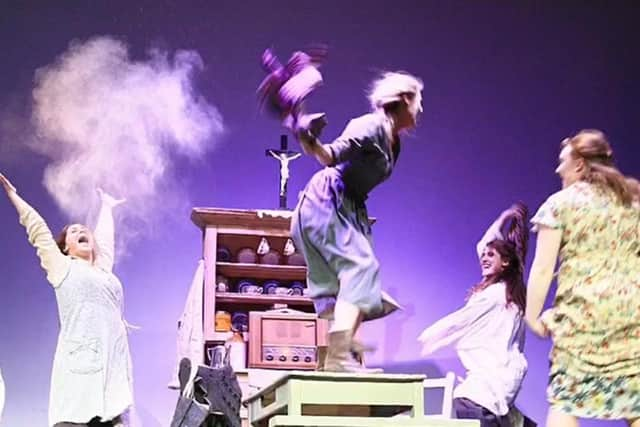

A scholarly gloss to the 11th century Lebor Gabála Érenn (Book of the Taking of Ireland) states that it comes from ‘Lugh’ and ‘nasad’ - ‘Lugh’s assembly’ - a funeral gathering called by Lugh in honour of his foster-mother Tailtiu. This was supposed to have occurred before the birth of Christ.
Geoffrey Keating, in his 17th century, Foras Feasa ar Éirinn (History of Ireland from the earliest period to the English invasion) gave this:
“It was Lugaidh Lámfada that first instituted the Fair of Talti in Ireland, as a solemn commemoration of his own foster-mother Talti, daughter of Maghmor, king of Spain, who had been wife of Eochaidh, son of Erc, the last king of the Fir Bolgs, when the same Lugaidh buried Talti beneath that mound, and when he convened that fair, as a solemn rite or memorial in honour of her; in memory whereof, the name Lughnasa or ‘Nasa Lugha’ is to this day given to the first of August, whereon is kept the feast of St. Peter Chains; but although the sacred mound of Talti had been in existence, and the solemn fair kept up ever since the days of Lugaidh Lámfada, still Talti was never erected into a royal residence until the days of Tuathal Techar.’”
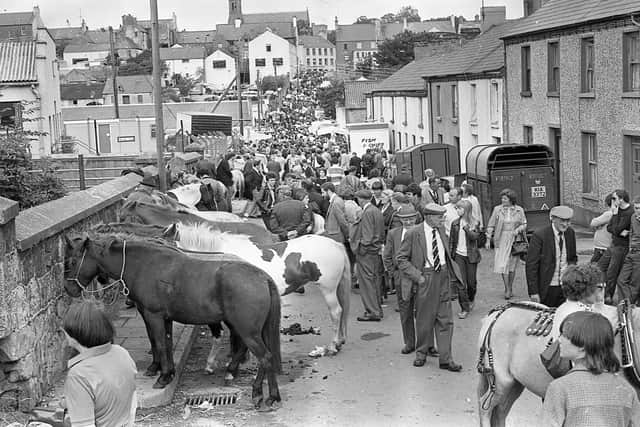

Advertisement
Hide AdAdvertisement
Hide AdLugh has strong links with Ulster. His grandfather ‘Balor of the Evil Eye’, the leader of the Fomorians, who he is said to have killed, looms large in the lore of Tory Island.
Though the cycles state that Lugh killed Balor in a legendary battle between the Tuatha Dé Danann and the Fomorians at Magh-Tuireadh by casting a missile through his eye with a sling, folk versions place his death at Tory, where the famous Tor Mór was said to be a remote fastness.
John O’Donovan, in his notes to the 1856 edition of the ‘Annals of the Four Masters’, told how he got a version from a Shane Ó Dugan of Tory.
Ó Dugan said Lugh appeared as a blacksmith and ‘taking a glowing rod from the furnace, thrust it through the basilisk eye of Balor and out through the other side of his head’.
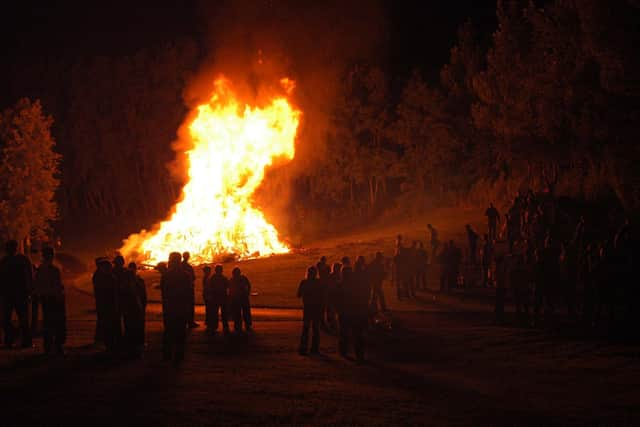

Advertisement
Hide AdAdvertisement
Hide AdThe account of Balor’s slaying was, according to several scholars, long connected to the Lughnasa festivities.
Lugh was equally the father of that most famous of Ulster heroes Cú Chulainn.
Thomas Kinsella’s acclaimed 1969 rendition of the ancient Táin Bó Cúailnge, the Cattle Raid of Cooley, relates that Lugh was the father of Sétanta, who would become better known as the ‘Hound of Ulster’.
Cú Chulain’s mother Deichtine, the sister of the King of Ulster Conchobar mac Nessa, had a dream at Emain Macha (Navan Fort) following a visit to Brú na Bóinne.
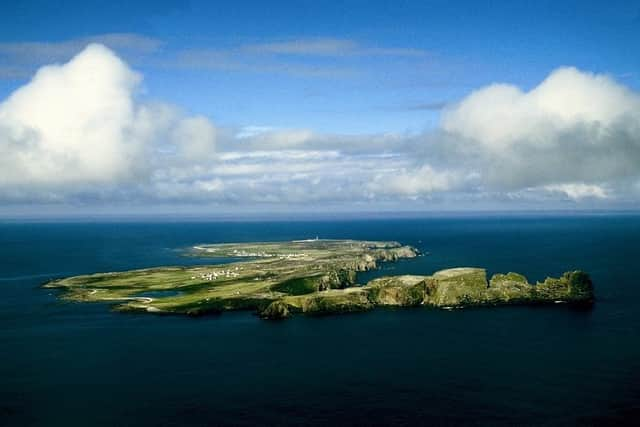

Advertisement
Hide AdAdvertisement
Hide Ad“She slept that night and dreamed that a man came toward her and spoke to her, saying she would bear a child by him - that it was he who had brought her to the Brug to sleep with her there...that he was planted in her womb and was to be called Sétanta, that he himself was Lug mac Ethnenn [son of Ethniu, Balor’s daughter, who the Fomorian imprisoned on Tory] and that the foals should be reared with the boy,” Kinsella wrote.
No wonder that much lore, superstition and practices were passed down and survived until very recently.
Bonfires were traditionally lit in August to mark the lúnasa celebrations. As with many ancient traditions, following the Christianisation of Ireland, the pagan ritual was sublimated into the celebration of the Feast of the Assumption on August 15.
Advertisement
Hide AdAdvertisement
Hide AdHalf a century ago in Derry the August bonfires began to become associated with the nationalist uprising against internment.
In the late 1930s Séamus Ó Duilearga and Séan Ó Súilleabháin from the Irish Folklore Commission went around all the national schools in the 26 counties collecting stories from pupils who were tasked with speaking with older people in their own communities.
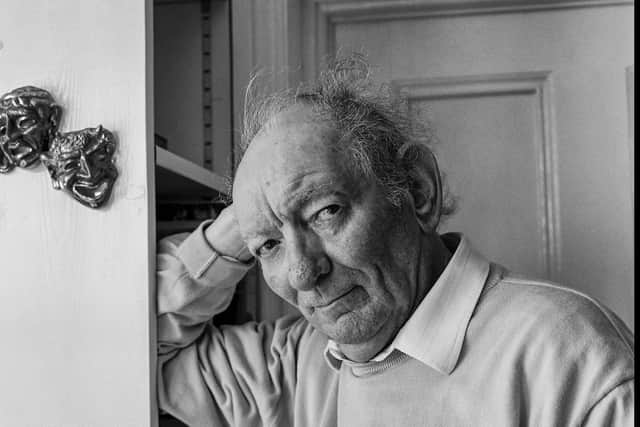

Some of those who contributed would have been alive before the Great Hunger and some of the stories and traditions they recalled harked back to the 18th century and earlier.
The testimony gathered in Donegal shows that in English-speaking parts of the county Lughnasa was conflated with Lammas Day (Loaf Mass Day), which also falls on August 1 and involves the blessing of the first of the harvest.
Advertisement
Hide AdAdvertisement
Hide AdSeán Ó Seanacháin, a teacher at Gráinseach Ailt an Chaistín, in St. Johnston, reported how it was considered a critical time of year:
“August 1 is called Lammas. Lammas used to be considered a very poor time of the year for the farming community because it was the time of the year when all the old crops were done and the new ones were not ready for harvesting, consequently extravagant people are often reprimanded with the saying ‘Is there no Lammas with you at all at all?’”
This precarity for a people often reliant on producing their own food strikes home in the following extended seanfhocal collected by teacher Éamonn Mac Stiopháin in Rathmullan.
Advertisement
Hide AdAdvertisement
Hide Ad‘Lammas is come. ‘More haste the less speed, like the tailor and the long thread. ‘Don’t sell your hen in a rainy day. ‘No flood in the burn, plenty of rats in the burn. ‘What’s bred in the bone is hard to get out of the flesh.’
Meaning, lúnasa, the time before the harvest, was a time of food scarcity, resourcefulness and thrift.
Irene McGuinness, from Ballyara, Co. Donegal, was told by the Tyrone-based John McGuinness, aged 64, that certain beliefs about how bountiful the harvest would be prevailed at this time of year:
Advertisement
Hide AdAdvertisement
Hide Ad“After Lammas, August 1, the corn ripens as much by night as by day. If August 24 be fair and clear it is believed that there will be a prosperous Autumn that year.”
Seoirse Ó Dochartaigh, a teacher at Carrowmore in Malin, heard that ‘on Lammas Day people used to dig the first meal of the new potatoes for dinner on that day’.
Given the proliferation of fairs, fleadhanna and festivals in Ireland in the month of August (lúnasa) it is hardly surprising these provide a particular emphasis in the IFC’s Schools’ Collection.
Kathleen Crumlish, a pupil at Star of the Sea, Glennagivney, collected this from Dan Sweeney who was aged 73 in the 1930s:
Advertisement
Hide AdAdvertisement
Hide Ad“The August fair in Carn, is called the ‘Lammas Fair’ and is a good sheep fair. Lammas Fair is sometimes called the ‘Herd’s Fair’ because the boy who is hired for herding cattle is allowed to this fair to buy gooseberries. Sometimes it is called the ‘Gooseberry Fair’.”
Reference to gooseberries, ripe to harvest at this time of year, crops up again and again.
Máire Ní Cholchuin, a teacher, at Masiness, Creeslough, received the following: “Long, long ago people practised a great many old customs on fair days and they do yet.
Advertisement
Hide AdAdvertisement
Hide Ad“Once a year there is a fair called the Lammas Fair, and the children are present that day.
“It is also called the ‘Gooseberry Fair’, as different kinds of fruit is sold that day. People sell woollen stockings. They come from Cloch-an-Liath [Dungloe] and other places.”
A separate source, Charles McGlinchey’s memoir of life around Clonmany in the late 19th and early 18th century, ‘The Last of the Name’ equally attests to the tradition of the ‘Gooseberry Fair’.
“Children were easily pleased at that time besides what they are now. When my mother was at the fair of Ballyliffin, or the ‘Gooseberry Fair, or the ‘Apple Fair’ in Buncrana, we would all be down about the rocks watching out for her coming home and she always said: An t’é is feárr a bhéas liom, ‘sé is feárr a gheobhas rionn [Whoever I like best gets the best share].’
Advertisement
Hide AdAdvertisement
Hide Ad“She would have gooseberries or apples or sweets with her, and maybe a length of ribbon for my sister Síle. We would gather round then and everything would be divided,” he recounted. But it wasn’t only an opportunity for mothers to treat their children as Peadar S. Ó Duibhidhe, a teacher at Lettercran submitted to the IFC:
“At the July fair, the Lammas Fair, the amount of cattle would be small but every person, young and old, would be there enjoying themselves.
“The habit of ‘treating’ was common at all fairs among the old people and it was the custom for a boy to bring his sweetheart for a ‘treat’. This custom prevails in Pettigo to this day. Often match-making was introduced and ‘matches’ settled.” Timeline -Extraordinary history of Derry & the NW 7000 BC to 2022 AD
Ernest Crawford, from Cullion, was told by a Mr B. Crawford, aged 59, that there was special fair in August for children:
Advertisement
Hide AdAdvertisement
Hide Ad“Long ago July fair was called the Lammas Fair and the day after it was a fair for children and all the children went there for a day’s fun. It was called the ‘Wee Lammas Fair.’”
Several of the informants point to the lúnasa fair as among the biggest and most important of the year.
“The May Fair and Lammas Fair are the two biggest fairs of the year. Cows, horses and pigs are sold at mostly every fair.” (Patrick Gallagher from Ellen Gallagher, aged 49, Faugher); “The Lammas Fair is the best fair of the year for sheep.” (Tommie Patton, aged 13 from Corlacky); “The May Fair and the Lammas Fair are the biggest fairs of the year.” (Doreen Holman from M. Mc Garvey, aged 78, Faugher); “The biggest fair of the year for cattle and sheep is in Creeslough on August 10. The fair is called the Lammas Fair.” (Laetitia Coll from E. Coll, aged 50, Faugher).
Advertisement
Hide AdAdvertisement
Hide AdIt wasn’t just animals, fruit and vegetables that were bartered at the fairs.
They were a labour exchange as well. John McNulty, aged 76, from Dromore near Manorcunningham, told this somewhat eerie tale to Isabel Bonner:
“The old mother was on the bed, and John was to hire a man for the harvest. He said he’d be to go to Lammas Fair of Strabane to hire a man. ‘If you go,’ said she, ‘I’ll be dead when you come back and if you hire a man I’ll not have him in the house.’ John went to Strabane and didn’t hire a man. She was dead when he came back. I missed hiring at the Lammas Fair too and John met me and hired me.
“I went to bed as I was tired and soon slept. John was in the town for a blade. Something woke me, and I was as wake as a wain. I saw her like through wire, with a wee white cap on her. She passed through the room to a loft at the back.
Advertisement
Hide AdAdvertisement
Hide Ad“I ran downstairs and me and John sat on the chairs till morning. I finished my time with John but slept at home.”
The fickle Irish weather was of great concern to the generations that farmed the land before us, and August was a time renowned for flooding. The inundations were know as the ‘Lammas Floods’.
Mr John Nelson, aged 58, gave the following account to An tSr. M. Beirín Ní Bhaoighill at Clochar na Trócaire, Carndonagh:
“About eighty years ago there was a great flood. It was on the Lammas Fair Day. The people could hardly get home from the fair with the big floods. The flood was that big on Strath river, it was a foot deep on the road. The men and women had to paddle through it coming from the fair.
Advertisement
Hide AdAdvertisement
Hide Ad“There was a man and woman coming from the fair and they were from...the Illies in Buncrana parish, and their names were Ned O’Doherty and Susan MacDaid, and they had to cross a bridge, and they were drowned.
“There was a windy night about forty five years ago. The roof of every thatch house was blown off. Slates and thatch were flying through the streets.”
A verse collected by teacher P. Ó Dochartaigh appears to refer to the same tragedy: ‘On to the rustic bridge, one more replaced; ‘For Lammas floods, with corps oft havoc play, ‘And e’en one swept the rustic bridge away. ‘O’er this quaint path, for generations, pass ‘The villagers to market and to Mass.’
Advertisement
Hide AdAdvertisement
Hide AdOld pagan practices were replaced or transposed into Christian celebrations over hundreds of years.
Many of the testimonies refer to pilgrimages to Holy Wells and places on both Lammas Day and the Feast of the Assumption.
Kathleen Hegarty, of Lisnanees Lower near Letterkenny, was told that there was a Holy Well at Moyle Hill on the road to Milford and that the ‘days for visiting the well are the Sunday before Lammas and two Sundays after Lammas’.
Advertisement
Hide AdAdvertisement
Hide AdAilbhe Ó Conáin, from Falcarragh, got the following from 83-year-old Seán Ó Congaile, who would have been born in the 1850s:
“The first Monday in Lughnasa, and Mary’s Day in August and Mary’s Day in Autumn are when people make the trip to Fionnán Falls the most. Women and children were mostly going there these days. The old men go too.”
Another elderly man from Falcarragh, Seán Ua Fhearaigh, related: “They have a big day on August 15 in the choir of Naomh Finnen.
“There is a well in Gortahork which provides ring worm medicine. It was Saint Colmcille who came one night and knelt on a stone to say a prayer. When he got up, the footprints of his knees were in the stone.”
Advertisement
Hide AdAdvertisement
Hide AdIn Cruit Island in the Rosses, 50-year-old Róise Ní Ghallchóbhair, said: “There are two blessed wells here and they are located adjacent to the beach.
“On August 15 people go to these wells and pray for good luck. Young and old are there and they are making the trip. This is how the people make the trip. They say five prayers and five Hail Marys at one well, then they say the same thing at the other well.”
Nowadays many of the traditions have been lost but their echoes reverberate in the festivals, fairs, fleadhanna, feile and feasts held all over Ireland at this time of year. Prime examples include the Puck Fair in Killorglin which finishes today, and the famous Lammas Fair in Ballycastle, at the end of August.
And though not as internationally renowned as Hallowe’en, ‘Lugh’s assembly’, like Samhain (November) has permanent resonance in that it is the word we use to refer to the month of August. If you are assembling in memory of Lugh over the next few weeks spare a thought for poor old Balor.
